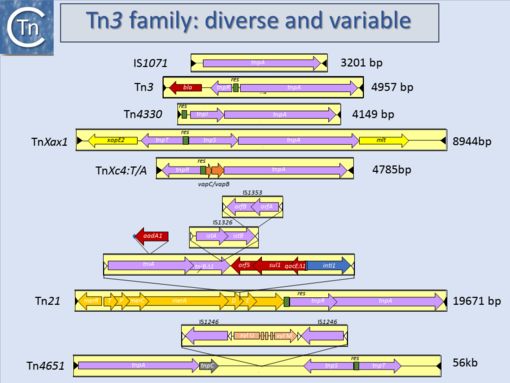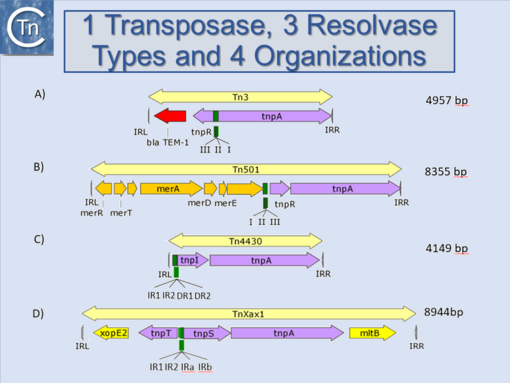General Information/ IS derivatives of Tn3 family transposons
Another source of ambiguity for classification purposes occurs in the Tn3 family (see section “Tn families”) (Fig.1.15.1 and 1.15.2). Tn3 family members are quite variable. They include a number of diverse passenger genes that can represent entire operons, notably mercury resistance, or individual genes involved in antibiotic resistance, breakdown of halogenated aromatics, or virulence [e.g. [1]]]. They often carry integron recombination platforms enabling them to incorporate additional resistance genes by recruiting integron cassettes[2]. Members are quite characteristic: they have long relatively well conserved IR and a particularly long Tpase (950 to 1025 aa). They also encode a site-specific recombination (“resolution”) system necessary for completion of their transposition[3]. There are a number of different resolution systems associated with different members of this family (Fig.1.15.2) IS1071, (Fig.1.15.1) composed of Tn3-like IR and Tpase gene but lacking both the site-specific recombination system and passenger genes was identified many years ago[4][5]. This clearly accords with the definition of an IS. Several other examples have now been identified (e.g. ISVsa19, ISShfr9, ISBusp1).

